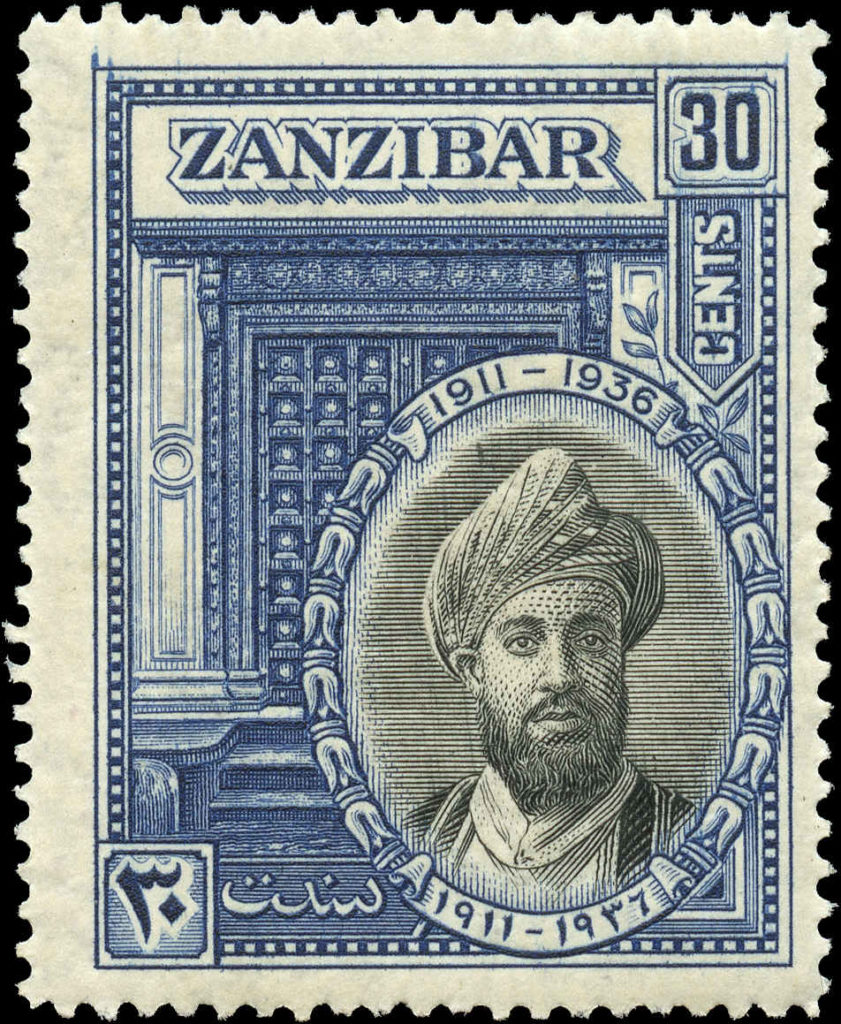
I was interested to come across a recent report that the Indian Ocean island of Zanzibar was cracking down on tourists wearing skimpy attire in public.
According to CNN, Lela Muhamed Mussa, the minister of tourism, declared that tourists must cover themselves from shoulder to knee in public places — or their tour guides or operators would pay the price, with fines ranging from U.S.$700 to $2,000. (Tourists themselves, who support the bulk of the local economy, are exempted, though they’re likely to draw stares and recriminations from offended local residents.)
Predominantly Muslim Zanzibar attracts up to 30,000 tourists per month, attracted by its combination of sandy, sunny beaches bordering sapphire waters and the island’s equally colorful (if often sordid) history, centered around Stone Town, Zanzibar’s capital. It’s when the clothing allowed on one intersects with the clothing appropriate on the other that the problems begin.
Bikinis are OK on the beaches and at the tourist resorts, but definitely not OK in Stone Town, where muezzin chant the calls to prayer from the minarets of mosques, former sultans’ palaces adorn the narrow, winding stone streets, and local women cover themselves in long hijabs — far more comfortable and colorful now, though, than a few decades ago, when head-to-toe black chadors, open only to the wearers’ eyes, were common.
Photographer Dennis Cox, my longtime collaborator whose images grace this post, dubs the new styles “Muslim chic.”

“When Are You Leaving?”
When I visited Zanzibar in 1977 — yes, that was a while back — I was excited to finally see what I imagined was the most exotic place on the planet: an island renowned for its spices and sunsets, where sultans once ruled and Arabic dhows bobbed in the water.
The name itself oozed exoticism: “Zanzibar.” Can any name roll off the tongue with the power to bedazzle as one with two “Z’s” and a bar attached?
But when my wife, Catharine, our friend, Diane, and I arrived fresh off the hour-long flight from Dar es Salaam and handed our passports to the immigration official, he eyed us with suspicion, demanding to know “Why are you here?”, quickly followed by “When are you leaving?”
He then said we had to take a mandatory three-hour guided tour of the island, paid in U.S. dollars, after which we would be free to roam around on our own — as long as we behaved ourselves, or words to that effect.
Not many tourists were visiting Zanzibar at that time — in fact, we were the only ones on our guided tour — and Zanzibar had the reputation of being a revolutionary hotbed of anti-Western sentiment.

Zanzibar’s Sordid History
As I soon discovered, Zanzibar’s suspicion of foreigners had its roots in 18th- and 19th-century history, when it was the premier slave-trading port in the region. As many as 50,000 African slaves were sold per year there, and at least that many died en route to the slave markets, most carried by ship under horrendous conditions.
While the trade routes connecting Zanzibar to Arabia, Persia, and India also shipped the island’s abundant coconuts and cloves to those far-flung destinations, slavery was the chief commodity during two centuries of rule by Omani sultans, who drove out the Portuguese in the late 17th century. At one point, Zanzibar was so critical to Indian Ocean trade that the Omani sultan moved his capital there from Muscat.
Ivory taken from elephants poached on the East African mainland was another shameful source of trade revenue.

Photo by Dennis Cox/WorldViews
The Age of Exploration
Zanzibar also became a gateway for exploring what was then known as the Dark Continent. Among other notable adventurers, English explorers Sir Richard Francis Burton and John Speake gathered men and supplies there for their epic forays into Uganda in search of the source of the Nile.
Burton, ever the romantic, waxed rhapsodic about Zanzibar’s charms: “Earth, sea, and sky” there, he wrote, are “all wrapped in a soft and sensuous repose.”
The explorer Dr. David Livingstone had a somewhat different take, dubbing the island “Stinkabar” for the mountains of garbage and human waste that collected on its beaches and sent a suffocating stench through the air, sparing neither slave nor sultan in Stone Town.
When Zanzibar became a British protectorate in the late 19th century — capped by the “World’s Shortest War” of 40 minutes when the British navy forced the Omani sultan to surrender — the slave trade ended.
British rule, aided by local sultans, continued until 1964, when a revolution by the African population installed a new socialist government, known as the People’s Republic of Zanzibar and Pemba (the other main island in the archipelago).
Thousands of ethnic Arabs and Indians died in the conflict and many others fled , as locals settled past grievances.
But the Arab influence remains strong in the form of Islam, the predominant religion, and ethnic Indians still run many of the shops. We purchased a fine wooden box decorated with hammered brass from a merchant whose teeth were permanently stained from chewing betel nuts but who, much more to the point, gave us “good price.”
After the revolt, Zanzibar quickly united with the newly independent former British colony of Tanganyika to form the East African nation of Tanzania — it lends the “Zan” to the name — while maintaining its autonomy in domestic affairs. Over the past decades since our visit it’s lost some of its revolutionary zeal and now has a two-party system of government as well as an economy based on tourism.

Sights and Aromas
Though we were unhappy with having to take a mandated government tour upon our arrival on Zanzibar in 1977 — we figured they were just trying to keep us out of any perceived mischief until we left — we soon learned it was a very good deal.
The private tour was led by a knowledgeable woman who drove us around the island, stopping at coconut plantations, showing off the then-mostly deserted beaches, even pulling off the road to let us pick and smell the lemon grass.
The air was perfumed with cloves and the tropical foliage was as thick and exotic as I had imagined it. It was quickly apparent why Zanzibar and Pemba are often dubbed the Spice Islands.
Later we toured Stone Town, named a UNESCO World Heritage Site in the year 2000. Largely built of reddish-tinged coral stone, Stone Town combines Arabic, Indian, Persian, Portuguese, and British cultural elements along with African — a feature of much of Swahili culture that dominates the East African coast.
Stone Town’s shaded, alley-like streets, too narrow to accommodate cars, are home to houses, shops, and other buildings that are often stunning in their artistry. Many sport large verandahs and intricately carved wooden doors, often studded with brass, that display Islamic and Indian details.

Stone Town Attractions
The top attraction along the seafront — at least until recently, when it suffered a partial collapse — is the palatial 1883-built House of Wonders, once an Omani sultan’s residence and more recently a museum of Swahili culture. The Omani government has pledged millions of dollars to help restore it.
Nearby is the town’s oldest stone structure, the Old Fort, started by the Portuguese but largely completed by the Omanis, who relied on it to repel further Portuguese attacks. Its courtyard is now used to stage musical and dance performances. (NOTE: At the end of this post I’ll reveal the name of the famous baby boomer singer, now deceased, who was born in Stone Town.)
The attractive Forodhani Gardens lie directly in front of the Old Fort and House of Gardens along the seafront. In the evenings, don’t miss the stands there selling grilled seafood and other local dishes. Get there for the spectacular orange-tinged sunsets over the water, and stay for the food.
Also along the seafront stands the Sultan’s Palace, now the Palace Museum. Other important sites are the Anglican Cathedral of Christ Church, built intentionally on the exact location of the old slave market; with the altar marking the spot of the whipping post.
And, with its two tall spires, the French-built Roman Catholic Cathedral of St. Joseph serves as a local landmark, especially for those arriving by sea. (Ferries make the journey from Dar es Salaam on the mainland, as well as Pemba.)
As for the recent brouhaha over clothing, I suspect that from now on tourists will observe local customs and cover up more while touring Stone Town — their guides and tour operators, otherwise on the hook for thousands of dollars in fines, will see to it.
Locals cover up a bit less than in the past, tourists a bit more — while they may never meet in the middle, it seems a good compromise.

Now, who was the celebrity singer born in Stone Town? The flamboyant Freddie Mercury, lead vocal for the rock group Queen, known for “Bohemian Rhapsody,” “We Are the Champions,” and many other hits. Let me know if you knew the answer!
Happy St. Patrick’s Day! If you haven’t seen my post, “Who Was the Real St. Patrick?”, go here.
Reader Comments:
I was in Zanzibar somewhat more recently than Clark — 15 years ago on a National Geographic assignment — and I found it strangely unsettling, especially Stonestown. It’s a very interesting destination for all of the reasons that Clark cites, and Dennis’s photos (as always) capture that side very well. But there was something distressing in the air, as though the suffering of an estimated 50,000 desperate human beings sold annually there at the peak of the island’s role in the slave trade was still palpable. The juxtaposition of that terrible history with Zanzibar’s uninhibited (mostly Italian) beach resorts made the experience all the more uncomfortable. To the degree that Zanzibar’s people distrust foreigners, however, is not rooted not in “outsiders'” involvement in slavery, but rather the fact that the European powers actively suppressed it after Britain outlawed the traffic in 1833. The slaves themselves were generally not natives of the island. They were forcibly seized and chained up in continental East Africa by armed Zanzibari gangs, then transported to Stonestown for sale — mostly to buyers from the Arab world, parts of which still permitted the “legal” enslavement of captured Africans well into the 20th century. A sordid legacy indeed. — Frank Viviano fviviano@gmail.com
Reply: Thanks for fleshing out this part of Zanzibar’s history and legacy, Frank, which is, like you say, a stain that is hard to remove. — Clark
I was lucky enough to visit the island a couple of years ago. It is heaven on earth but with a dark secret, well not really a secret. But the mixture of Arabia and Africa is fascinating and the meeting of amazing turquoise seas and blue skies breathtaking. The local people seemed to happy to see us and the local cuisine was mouth watering. I can’t wait to return! — jayne.whitehall@hotmail.com
Reply: Glad you enjoyed it, Jayne. It is a fascinating place, and I’d love to return as well. — Clark












3 Responses to Zanzibar: Island of History, Mystery, and Modest Attire